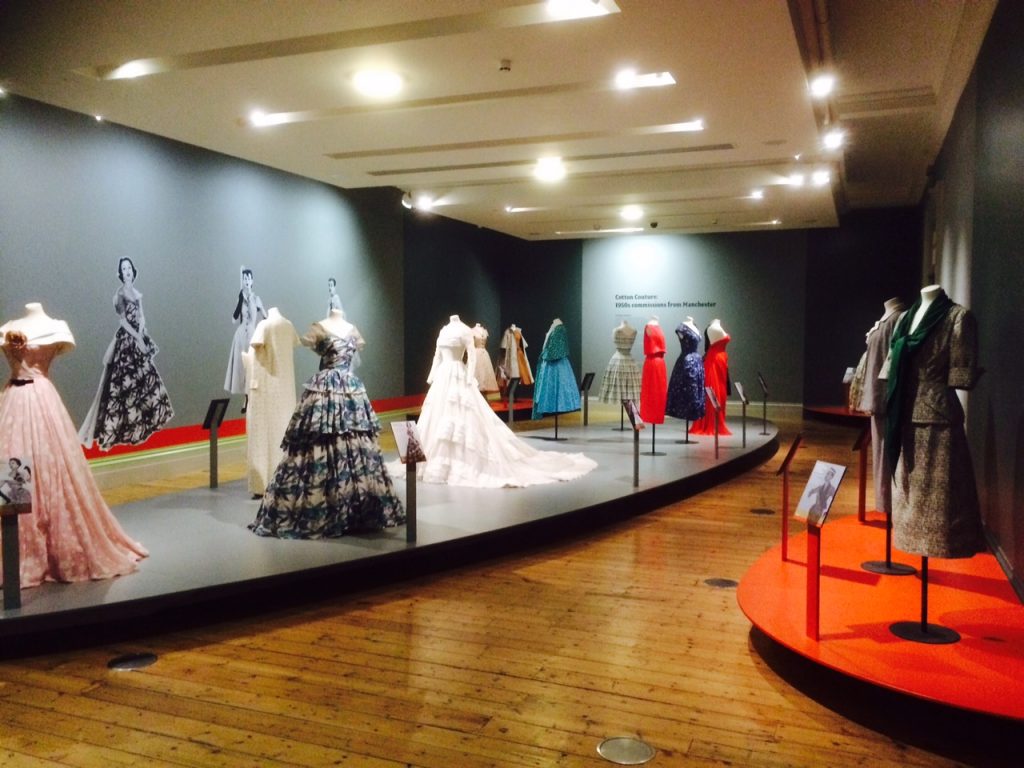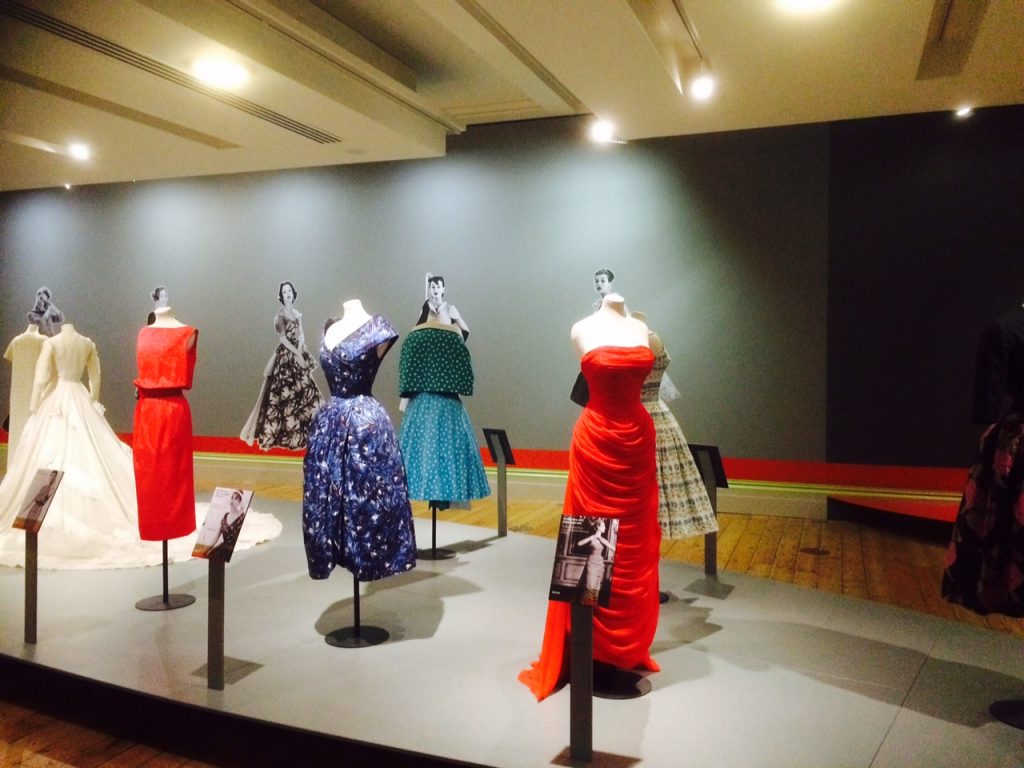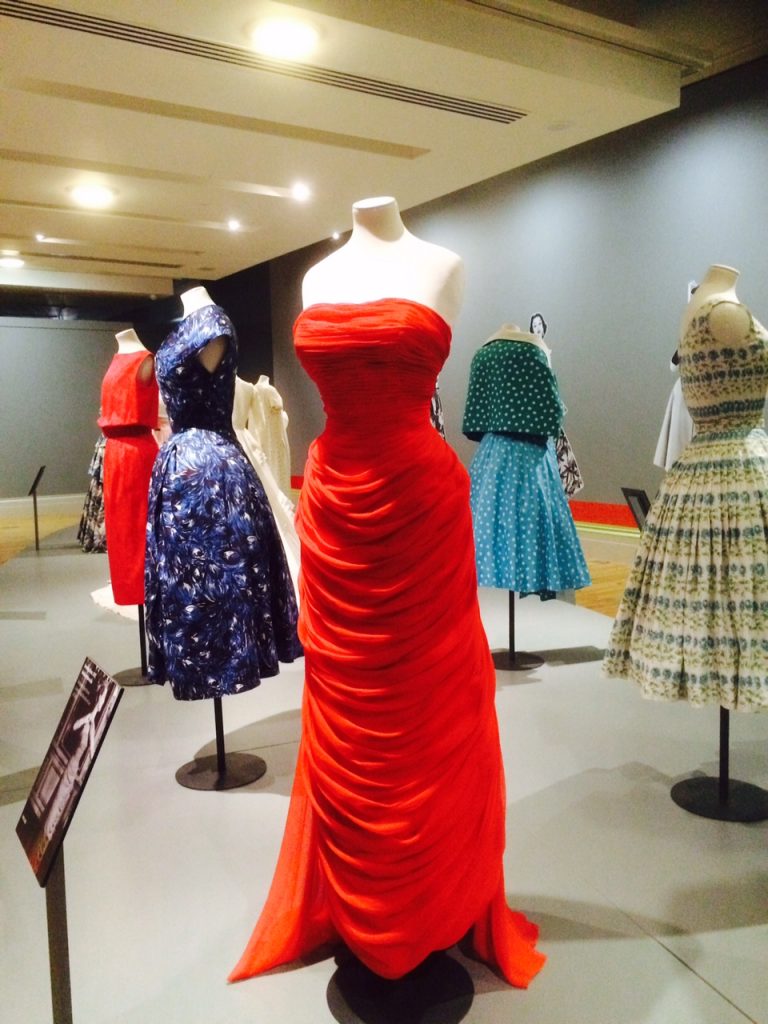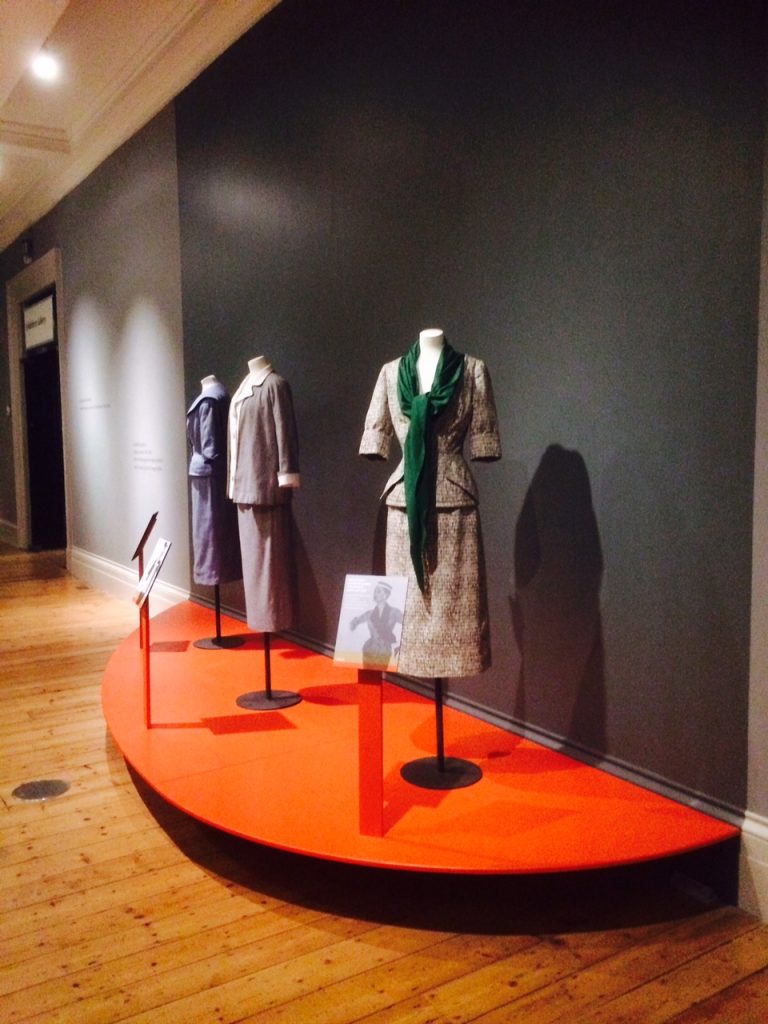Cotton Couture
The Gallery of Costume houses a remarkable collection of designer dresses and suits commissioned by the Colour, Design and Style Centre of the Cotton Board.
The Centre concentrated on exhibitions, shows and commissions to promote cotton in fashion. The surviving outfits were all designed for the catwalk, and were created by the leading London and Paris couturiers of the 1950s. They exemplify the best of cut and silhouette for high-end fashion.
In Lancashire, raw cotton was imported mainly from the southern states of the USA and was woven and printed in huge quantities. By the 1950s, it was viewed pre-eminently as a fabric for summer dresses or children’s wear, or else for underwear or workwear. The fashion industry did not look to cotton usually for stylish evening or cocktail outfits, which were invariably made of silk, or for tailoring, which was usually in wool. The Cotton Board deliberately challenged these established views by commissioning ball gowns, cocktail dresses and tailored suits, all in a striking range of different cottons. The effect of this publicity is unclear; what is evident is the demonstration of the immense versatility of cotton in all its myriad of finishes.
The Gallery has about 60 outfits donated by the Cotton Board, nearly all from the 1950s. British designers Hardy Amies, Michael Sherard, Digby Morton, John Cavanagh and Victor Stiebel created dresses alongside some of the great Parisian couturiers: Jean Patou, Jean Desses, Jacques Griffe, Pierre Balmain and Pierre Cardin.
This display at Manchester Art Gallery contained a representative group of 20 of the outfits from the collection along with contemporary fashion release photographs and film from a 1950s catwalk show.
Images courtesy of Manchester Art Gallery.





